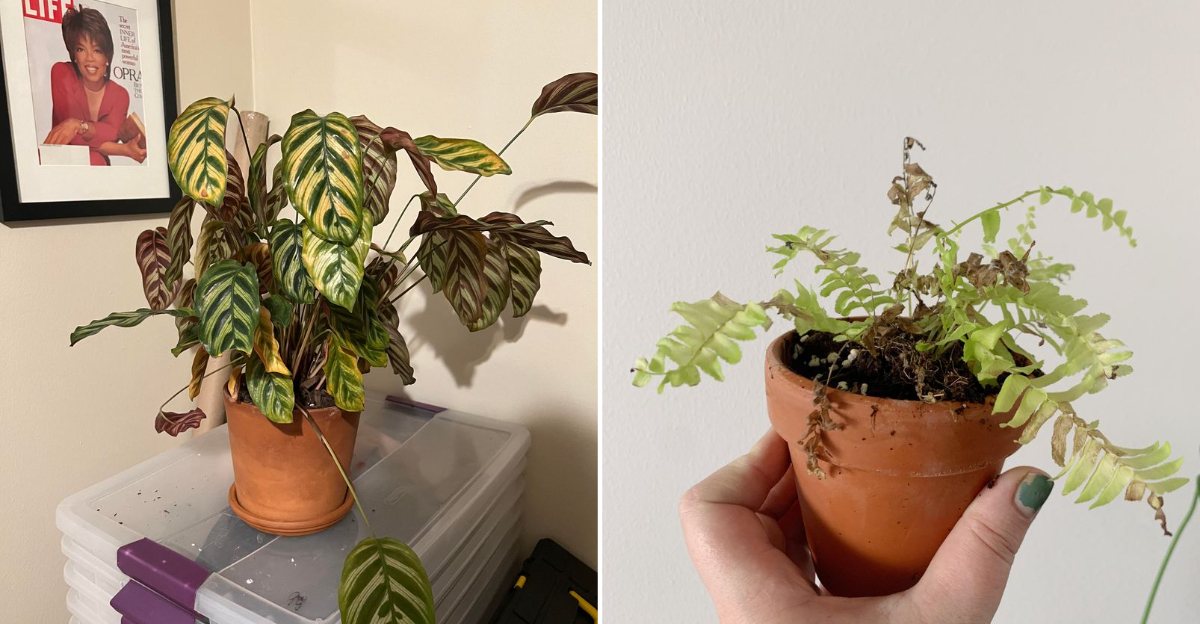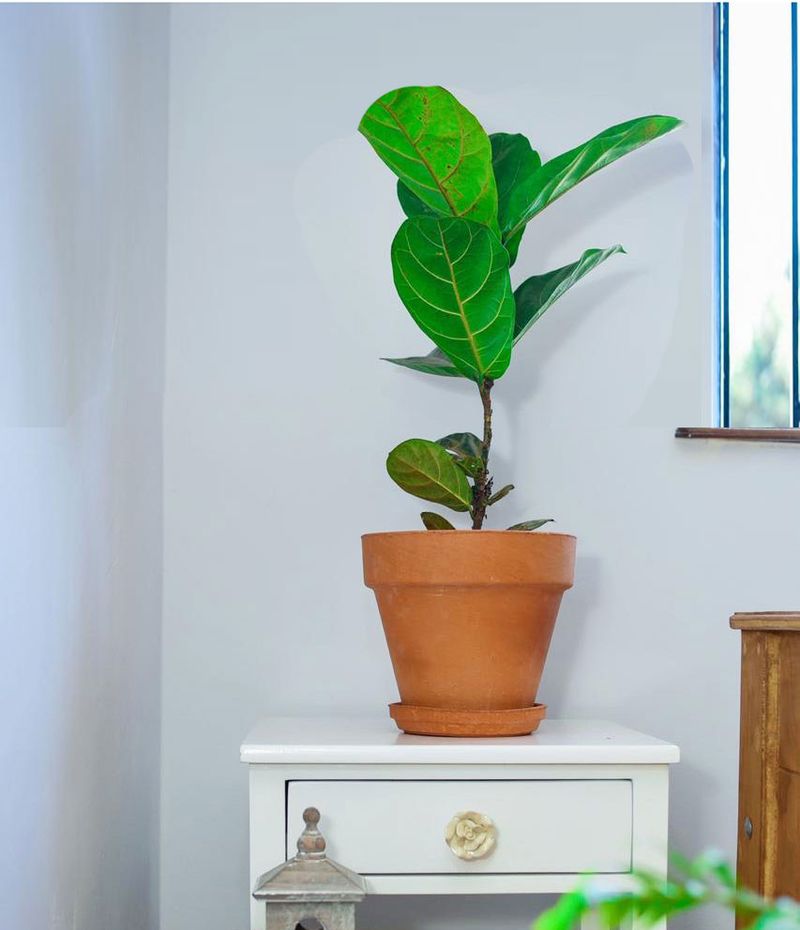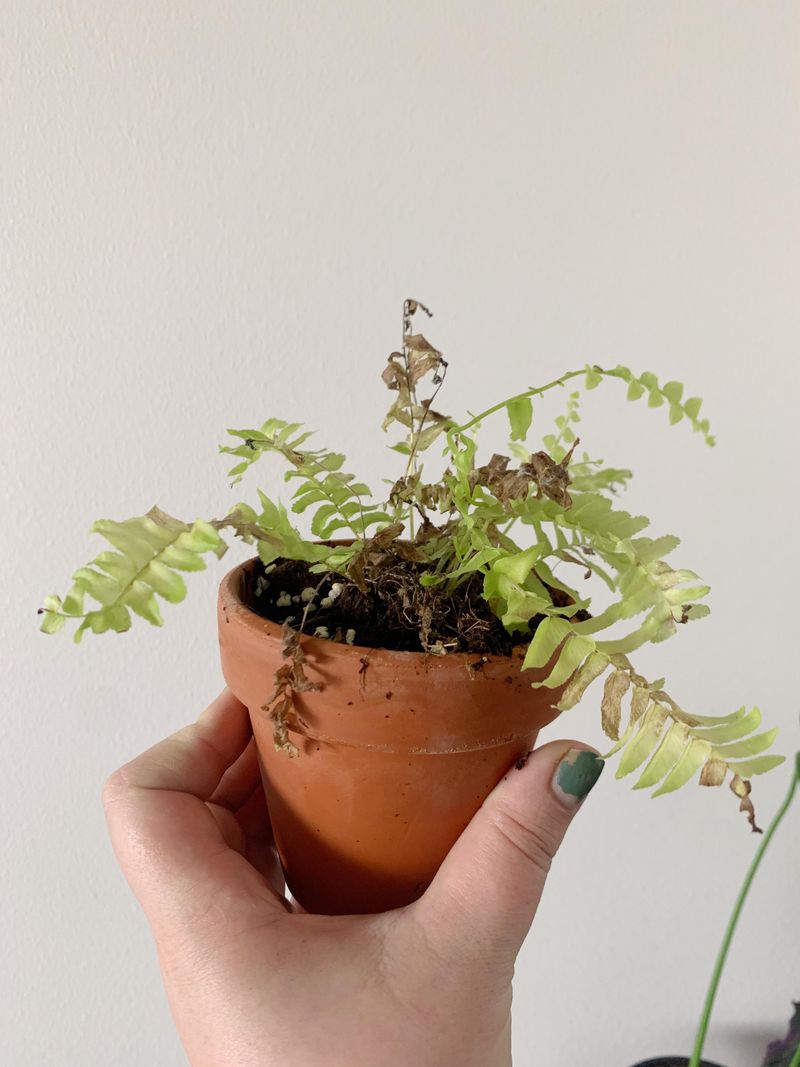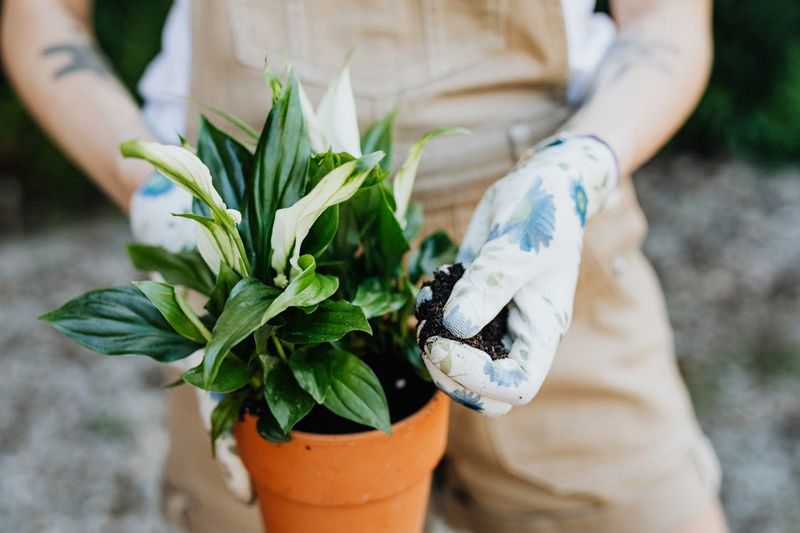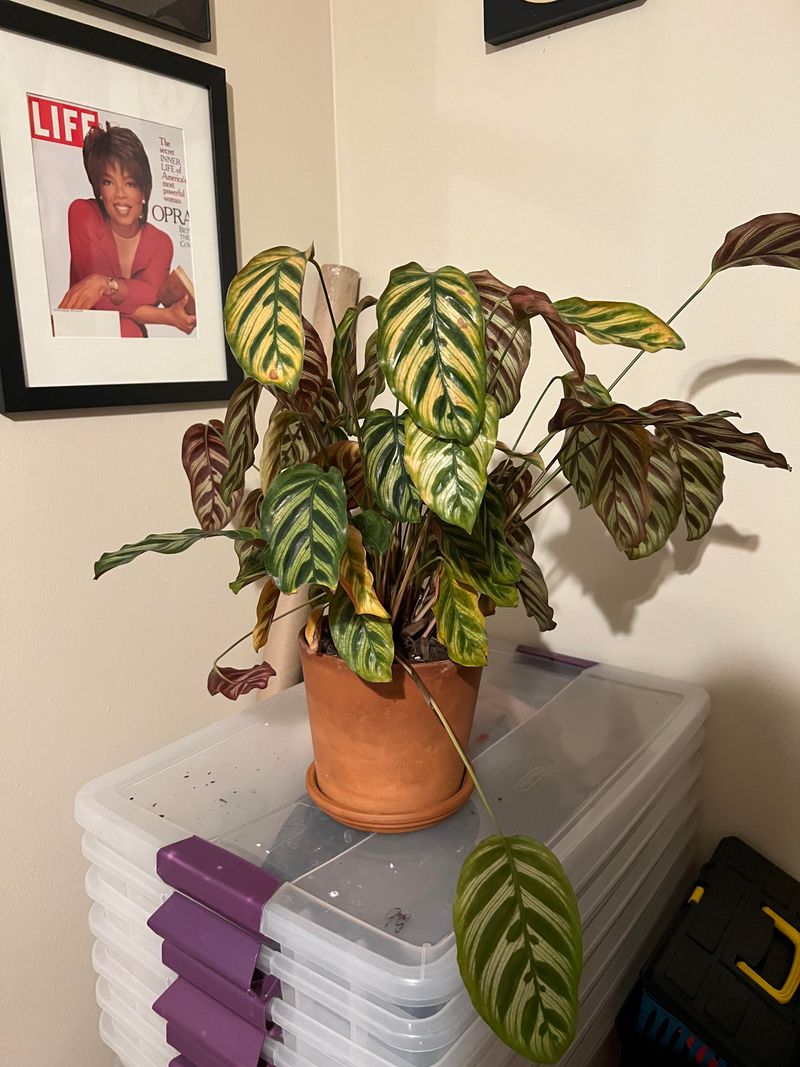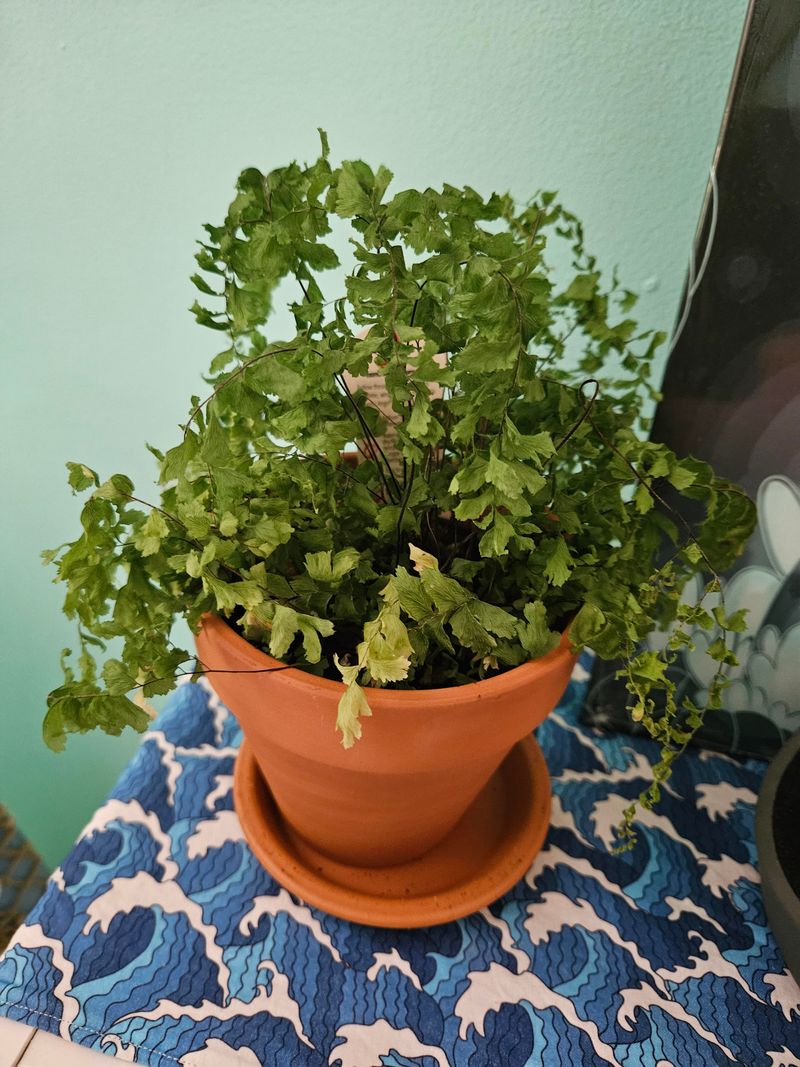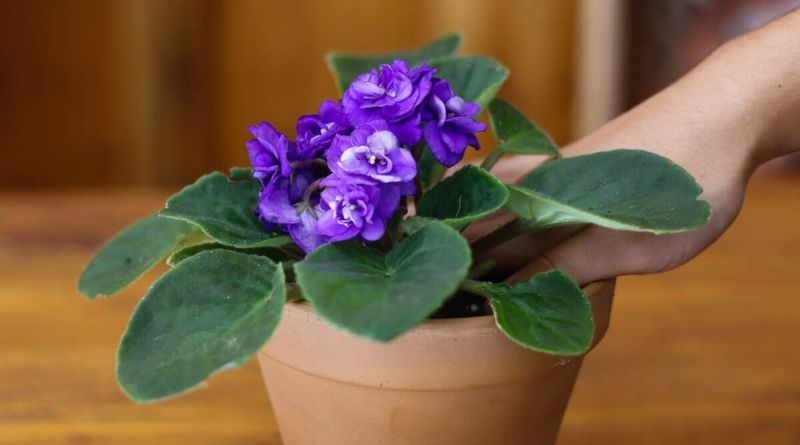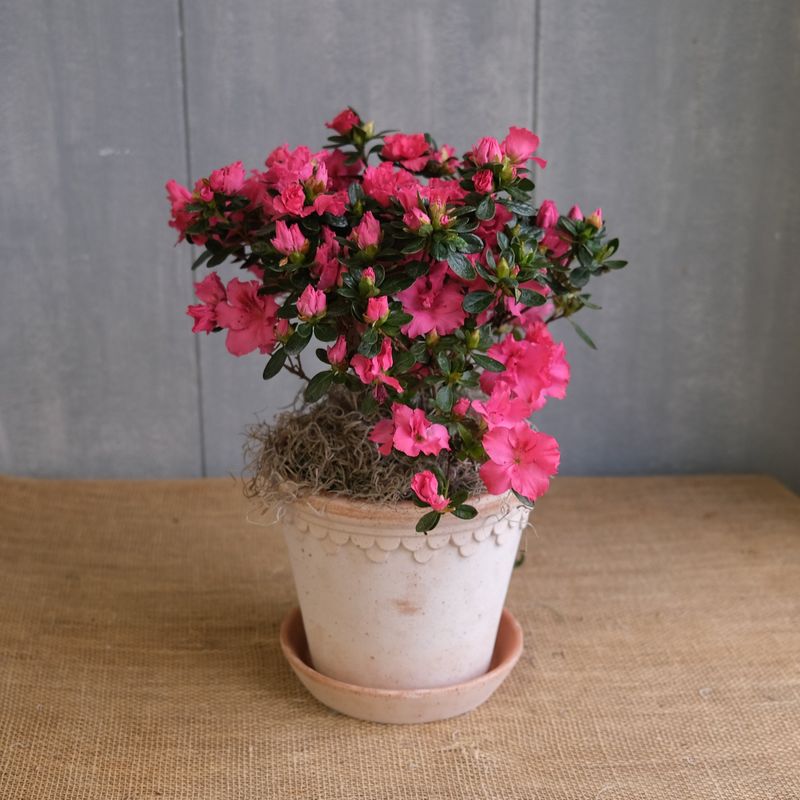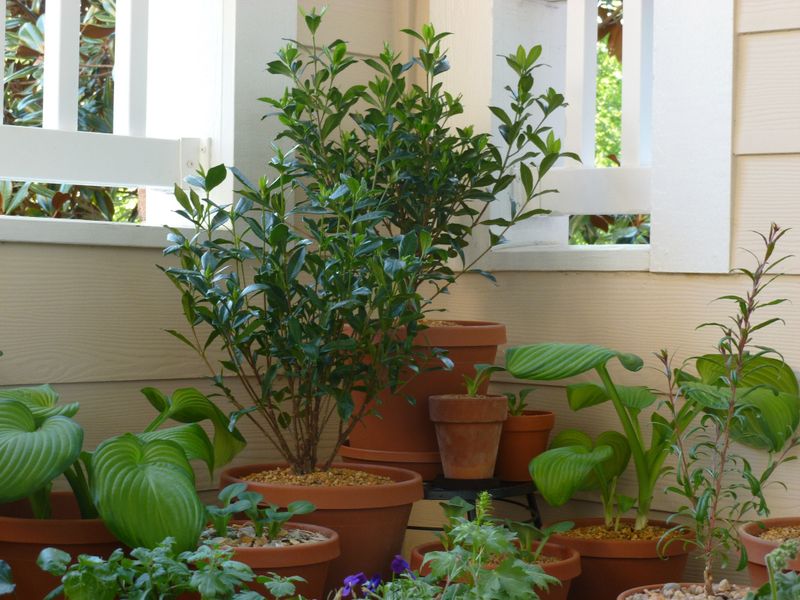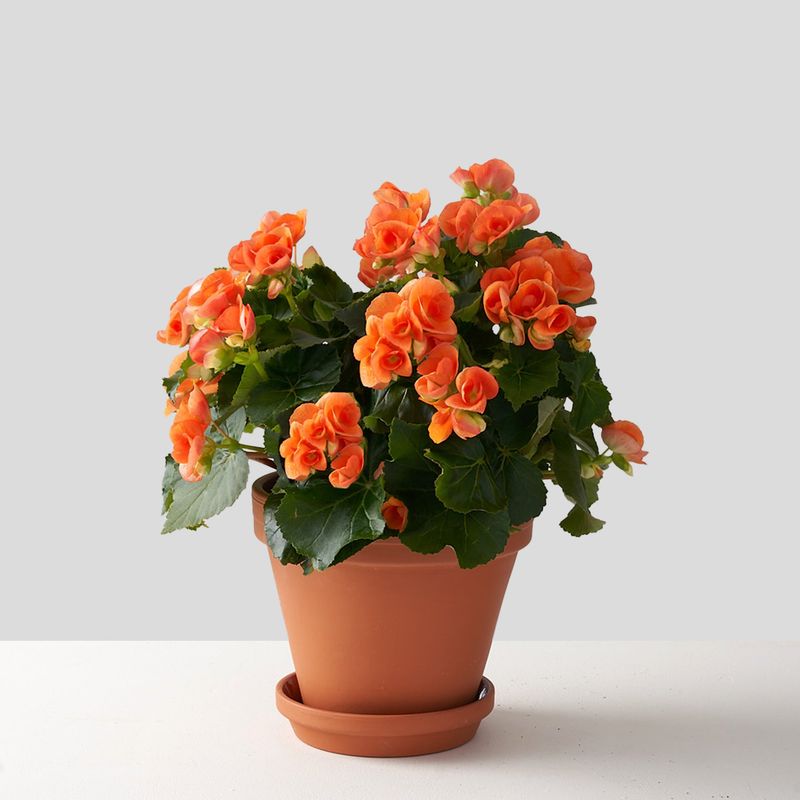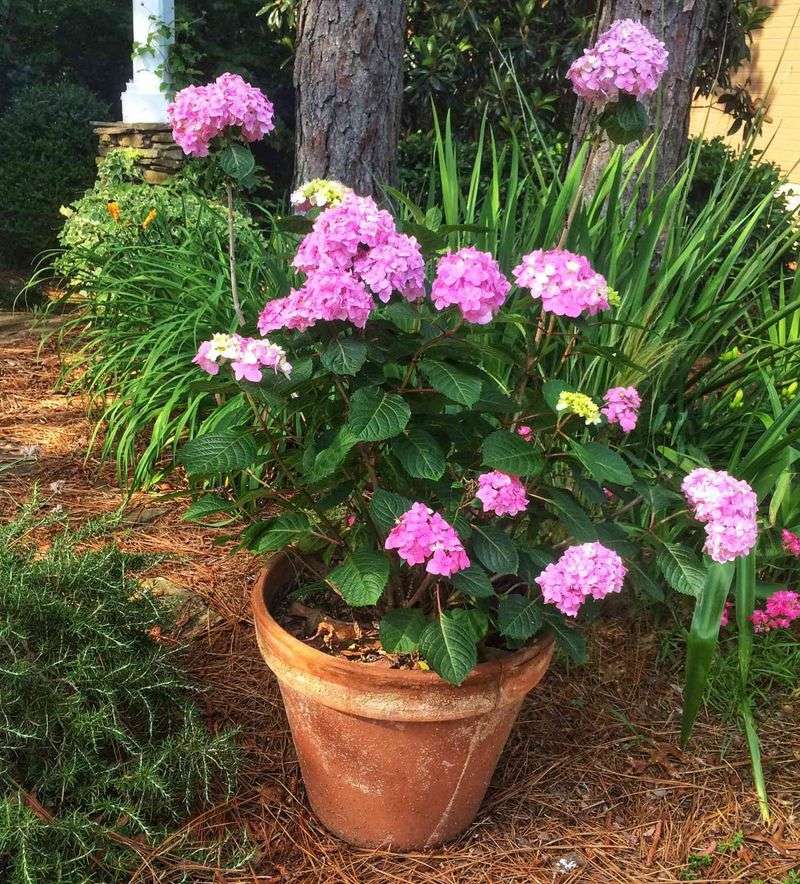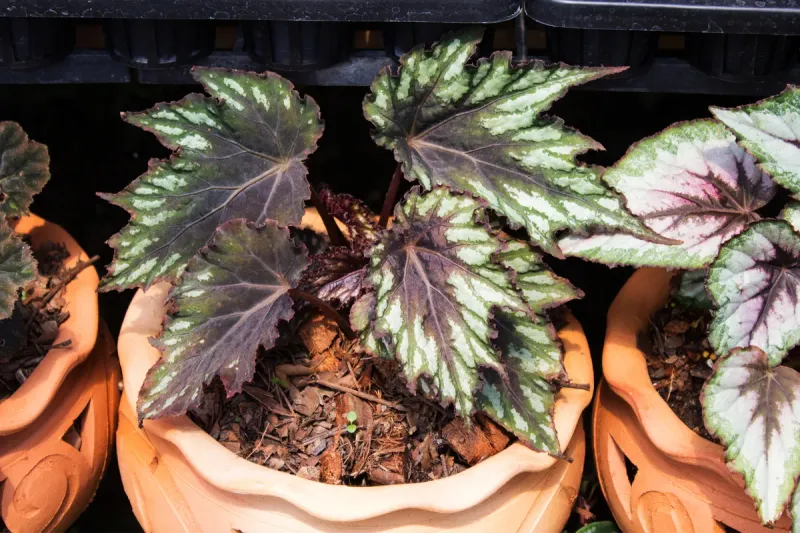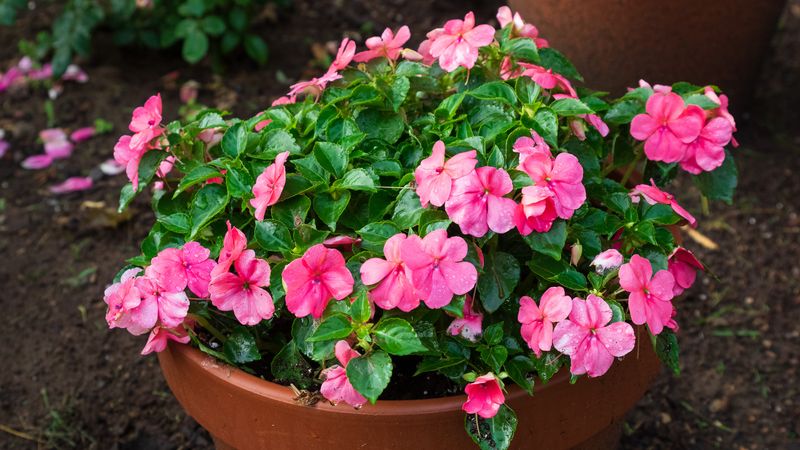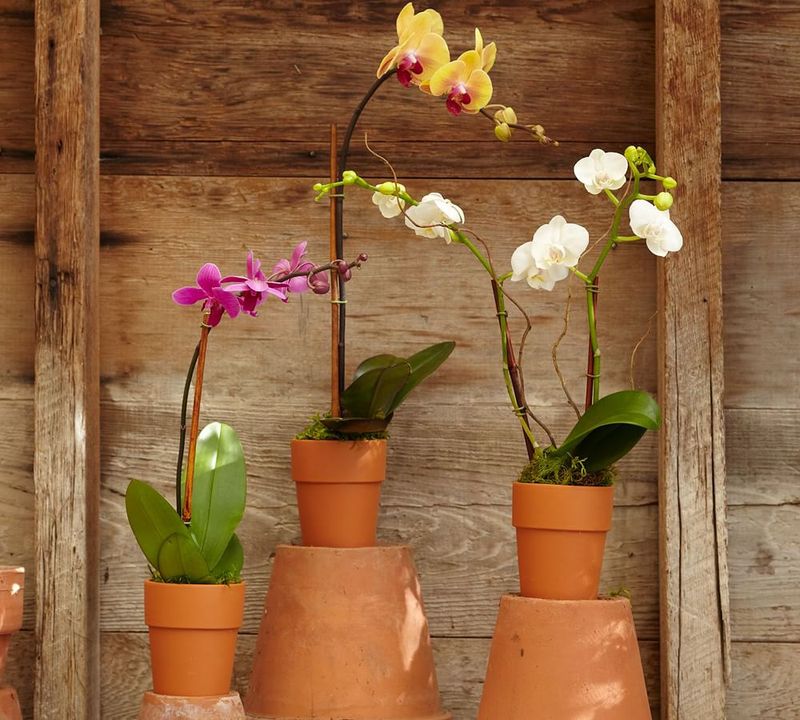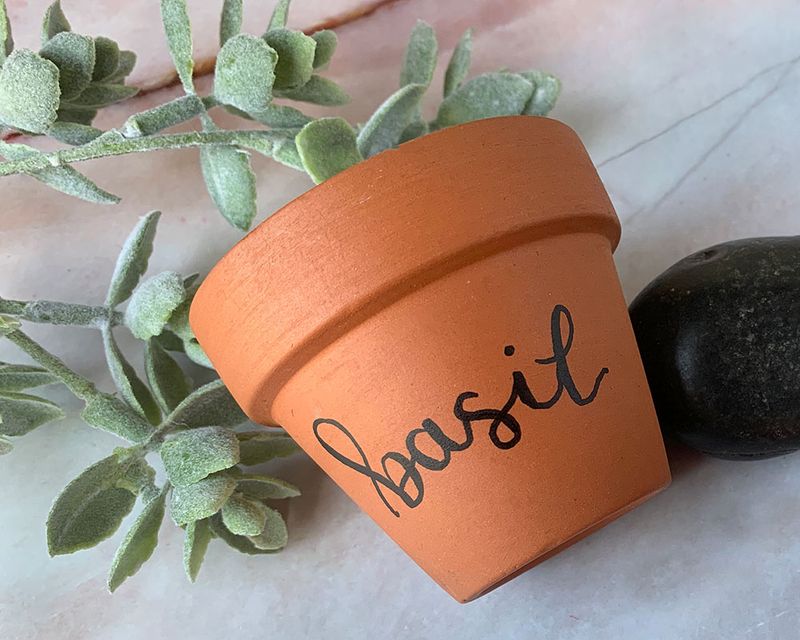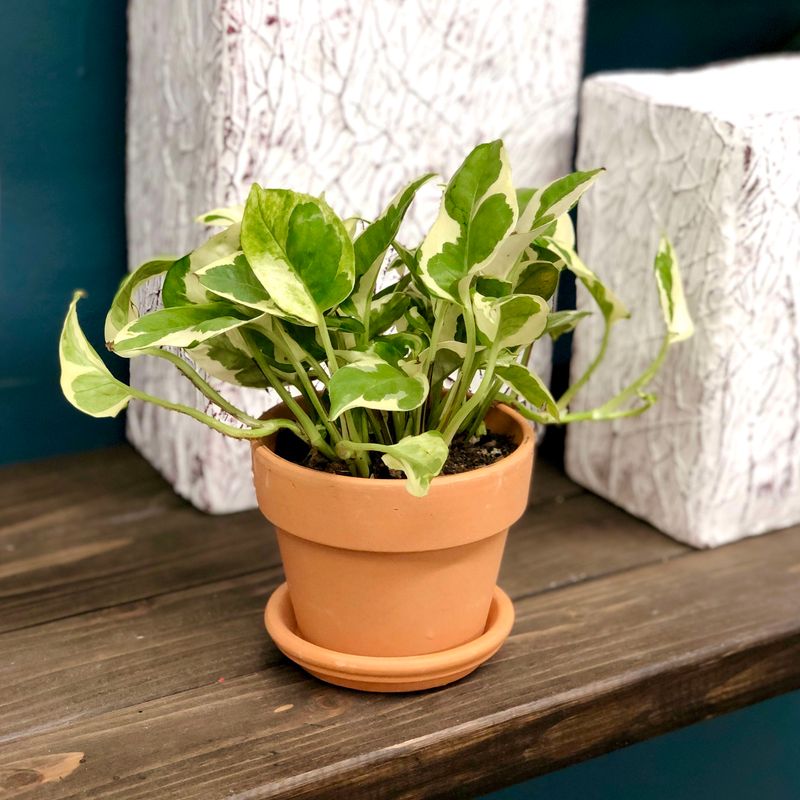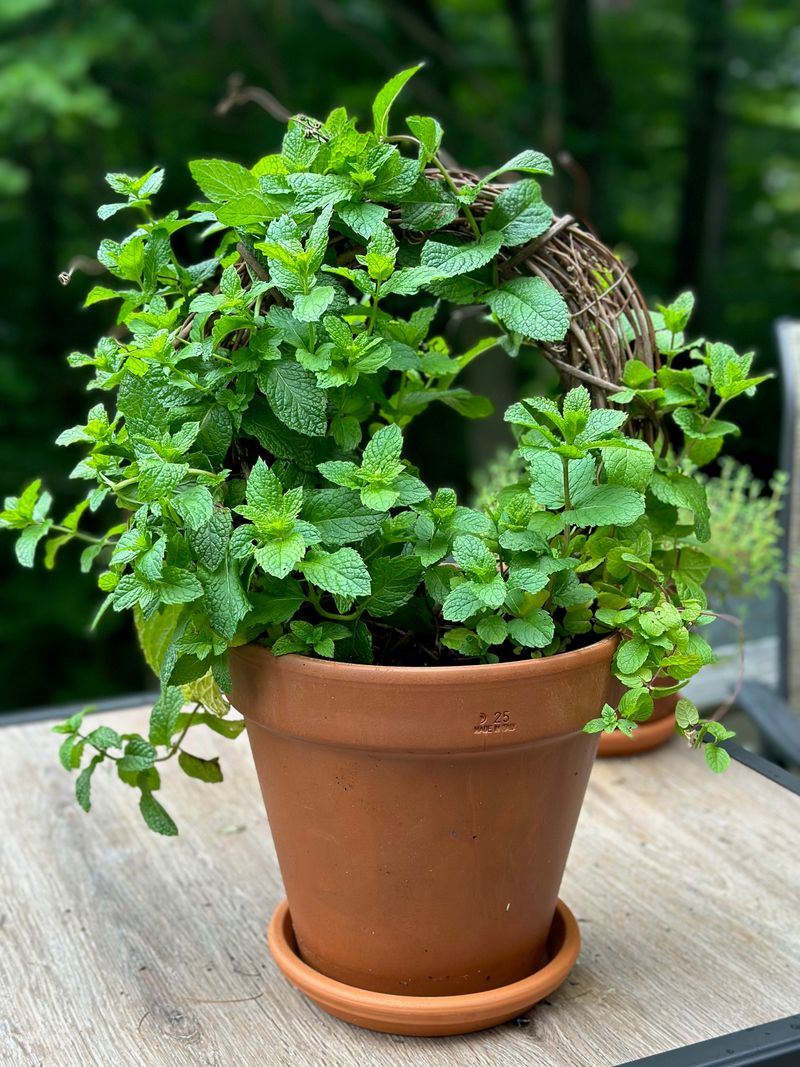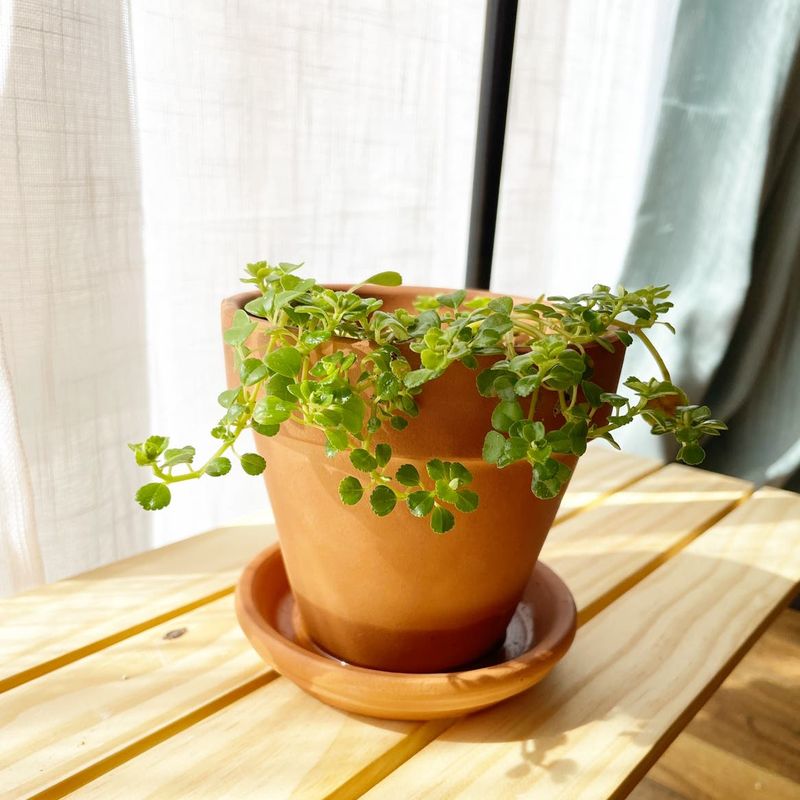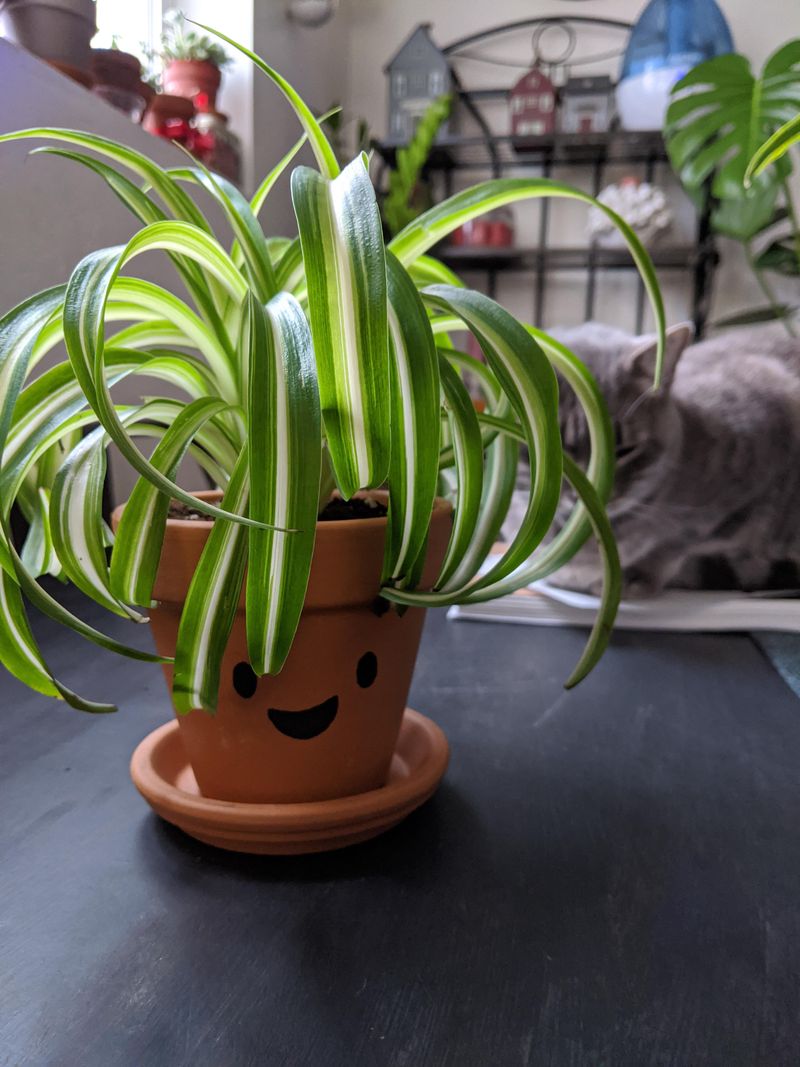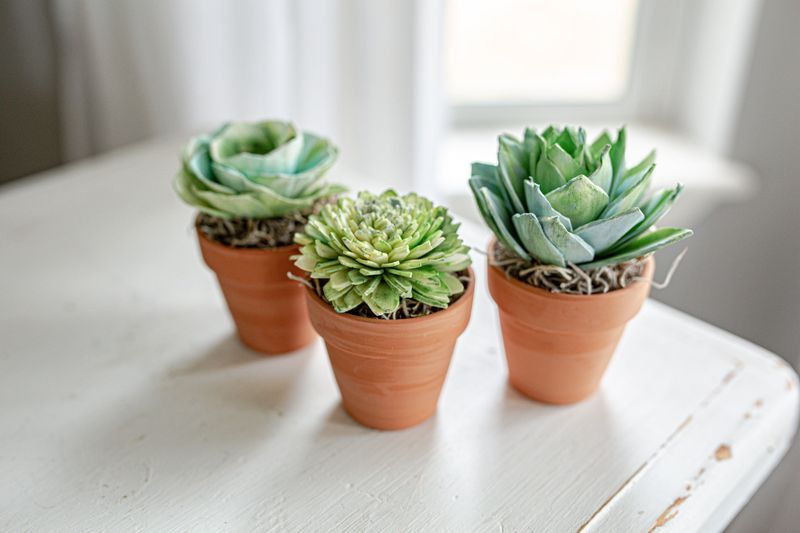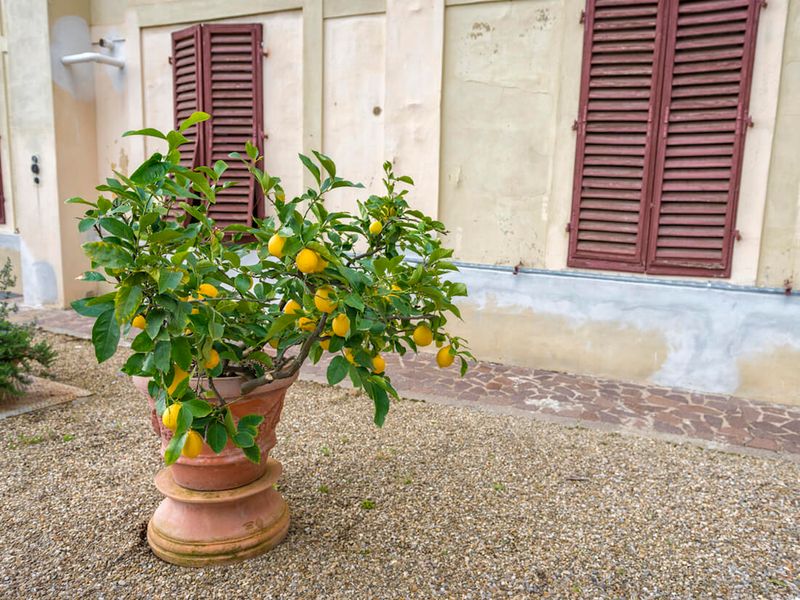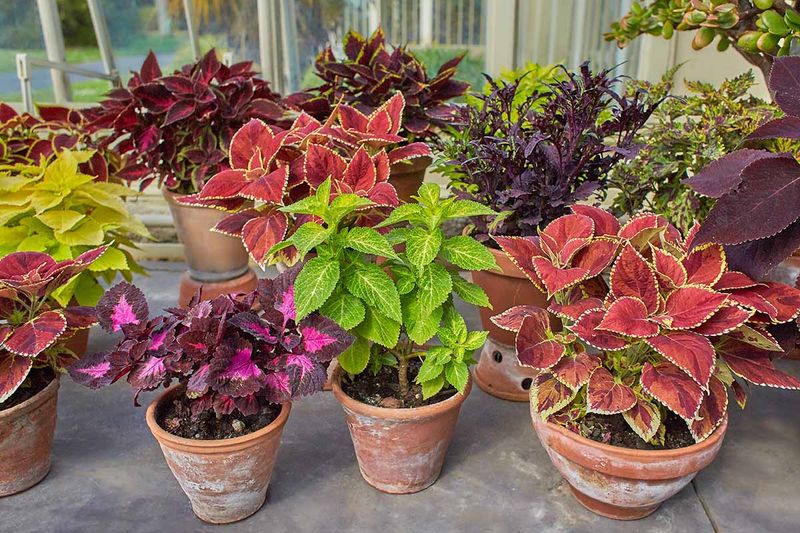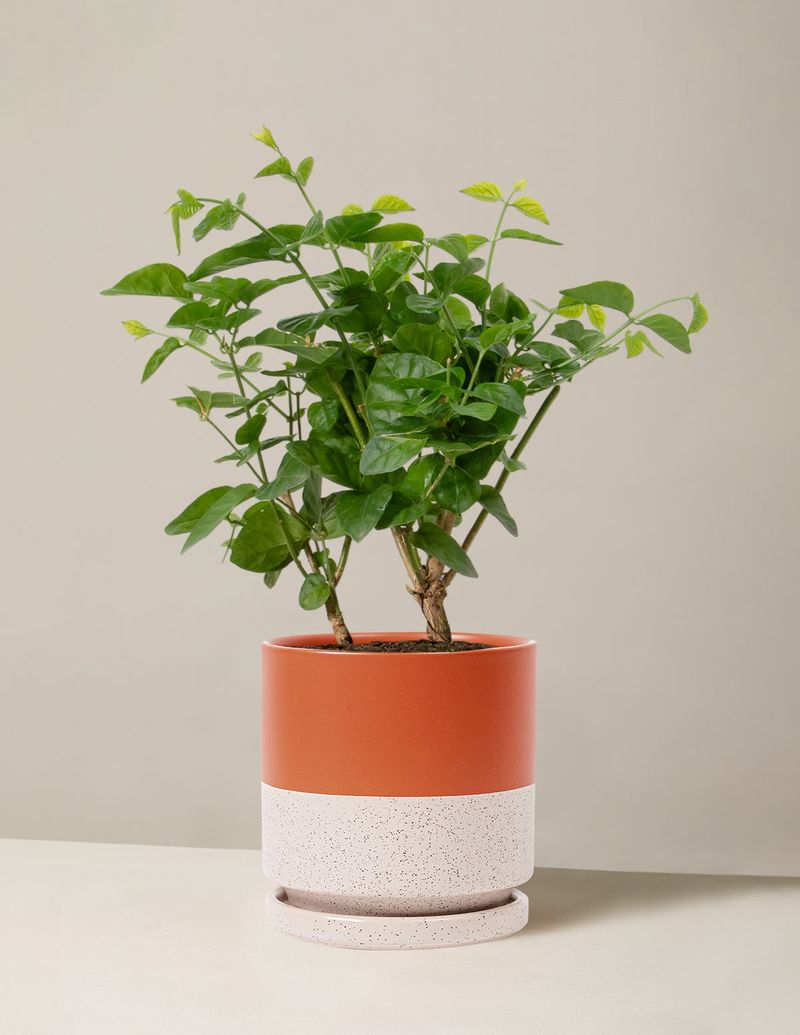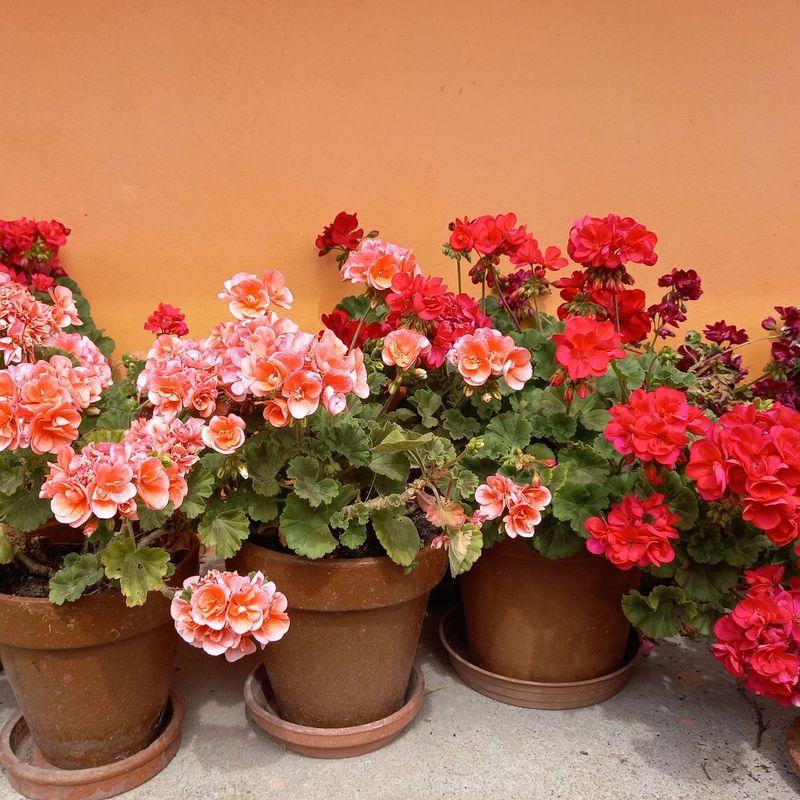Terracotta pots are a favorite among gardeners for their rustic appeal and breathability. However, not all plants thrive in these classic containers.
The porous nature of terracotta can lead to rapid soil drying, making it a challenging environment for some plants.
In this article, we will explore 24 plants that tend to struggle in terracotta pots and provide insights and tips on how to manage their care if you choose to plant them in these pots.
Understanding these challenges can help you make informed decisions for a thriving garden.
1. Fiddle Leaf Fig
Fiddle Leaf Figs are popular indoor plants known for their large, glossy leaves. However, terracotta pots can be a challenge for these moisture-loving plants. The pots’ porous nature causes the soil to dry out quickly, which can lead to stress and leaf drop.
To help your Fiddle Leaf Fig thrive, consider using a plastic liner inside the terracotta pot to retain moisture. Regularly check soil moisture and water when the top inch feels dry. Grouping with other plants can also increase humidity levels, benefiting your fig.
With proper care, these plants can adapt, but attention to watering is crucial.
2. Boston Fern
Boston Ferns are graceful plants, perfect for adding a lush touch to interiors. Yet, they struggle in terracotta pots due to rapid moisture loss. These ferns prefer consistently moist soil, and the pot’s breathability can leave them parched.
If you love the look of terracotta, consider placing your fern in a plastic pot first and then nestling it into the terracotta. Regular misting and a nearby humidifier can also help maintain humidity levels.
Monitor the soil regularly and water when it feels dry to the touch. With these strategies, your Boston Fern can still flourish.
3. Peace Lily
Peace Lilies are known for their lush foliage and elegant white blooms. However, they can struggle in terracotta pots, where soil tends to dry out quickly. This can lead to wilting and poor flower production.
To keep your Peace Lily happy, consider using a moisture-retentive potting mix and water thoroughly once the soil’s top inch is dry. Placing a humidity tray nearby can help provide additional moisture.
Regularly check the soil’s moisture level and adjust watering frequency as needed. With attentive care, Peace Lilies can adapt to these conditions and bloom beautifully.
4. Calathea
Calatheas are favored for their striking leaf patterns, but they are quite sensitive to dry conditions. In terracotta pots, the soil can dry out too fast, causing leaf curling and browning edges.
To support your Calathea, opt for a pot with a plastic liner to help retain moisture. Regularly mist the leaves and use filtered water to avoid mineral build-up.
Check the soil moisture often and water when necessary to ensure the plant remains hydrated. With the right care, Calatheas can overcome the challenges posed by terracotta pots.
5. Maidenhair Fern
Maidenhair Ferns are admired for their delicate fronds, but they demand high humidity and consistent moisture. In terracotta pots, the soil dries out swiftly, which can cause the fronds to brown and crisp.
To combat this, place your Maidenhair Fern in a plastic pot within the terracotta or use a self-watering pot system. Regular misting and positioning it in a humid environment are crucial.
Keep an eye on soil moisture and adjust your watering schedule accordingly. With careful attention, these ferns can still thrive even in drier conditions.
6. African Violet
African Violets are charming with their colorful blooms, but they prefer steady moisture levels, which terracotta pots can disrupt. The porous pots cause soil to dry rapidly, affecting the plant’s health and flowering ability.
For best results, use a water-absorbing liner or double-potting method to help maintain soil moisture. Ensure your plant receives indirect light and water it from the bottom to prevent leaf damage.
Regularly check the soil and water when needed to keep your African Violet vibrant. With these adjustments, they can adapt to life in terracotta pots.
7. Azalea
Azaleas are beloved for their vibrant blooms, but they prefer acidic, consistently moist soil. Terracotta pots can dry out too fast, impacting flower production and overall plant health.
To maintain moisture, consider using a plastic pot as a liner within the terracotta or choose a glazed ceramic pot to reduce moisture loss. Regular watering and placing the pot in a shaded area can help.
Checking soil moisture regularly will ensure your Azalea remains hydrated and healthy. With careful management, they can still thrive in these conditions.
8. Gardenia
Gardenias are prized for their fragrant flowers and glossy leaves. However, they require constant soil moisture, which terracotta pots can compromise. The rapid drying leads to yellowing leaves and reduced blooms.
To help your Gardenia, use a moisture-retentive potting mix and consider a plastic liner inside the terracotta pot. Positioning it in a humid spot and providing consistent watering are beneficial.
Monitoring the soil moisture and adjusting watering practices can help your Gardenia flourish despite the challenges of terracotta pots.
9. Begonia
Begonias are loved for their decorative leaves and flowers, but they favor a moist environment, which terracotta pots can hinder. The pots’ porous nature causes soil to dry swiftly, stressing the plant.
To support your Begonia, use a pot with a plastic liner to help retain moisture and place it in a spot with indirect light. Regular checking of soil moisture and watering is crucial.
With these strategies, your Begonia can adapt and grow beautifully, even in terracotta pots.
10. Hydrangea
Hydrangeas are known for their beautiful blooms, but they demand consistently moist soil. Terracotta pots can lead to rapid drying, causing wilting and reduced flower production.
To maintain adequate moisture, consider using a plastic pot inside the terracotta or a glazed ceramic alternative. Regular watering and positioning in a shaded area can help mitigate moisture loss.
Consistent monitoring of soil moisture and adjusting the watering schedule accordingly will ensure your Hydrangea remains healthy and vibrant, even in challenging conditions.
11. Rex Begonia
Rex Begonias are admired for their vibrant and exotic foliage, but they can be quite sensitive to drying out. Terracotta pots exacerbate this issue by allowing water to evaporate quickly, challenging the plant’s need for consistent moisture.
These plants do best with a regular watering schedule and high humidity. Consider placing them in a room with more humid conditions or using a humidity tray.
While Rex Begonias may pose a challenge in terracotta, with diligent attention to their moisture needs, they can still make a stunning statement in your plant collection.
12. Impatiens
Impatiens are popular for their bright, cheerful blooms, but they prefer consistently moist soil. Terracotta pots can dry out too quickly, leading to wilting and reduced flowering.
To maintain soil moisture, consider using a plastic liner inside the terracotta pot or a self-watering pot. Regular watering and positioning in a shaded area can help preserve moisture.
Keeping a close eye on soil dryness and adjusting watering frequency will ensure your Impatiens remain healthy and vibrant, despite the challenges posed by terracotta.
13. Orchid
Orchids are elegant and exotic, but they require specific moisture conditions, which terracotta pots can disrupt. The rapid drying of soil leads to stressed roots and drooping flowers.
To support your Orchid, use a potting mix designed for orchids and consider a plastic liner inside the terracotta pot. Regular misting and maintaining a humid environment are beneficial.
Monitoring the substrate closely and adjusting your care routine accordingly can help your Orchid thrive, even in the less-than-ideal conditions of terracotta pots.
14. Basil
Basil is a beloved herb, perfect for culinary use, but it struggles in terracotta pots. The pots’ porous nature leads to rapid soil drying, which can cause wilting and stress.
To keep your basil healthy, use a plastic liner within the terracotta or a self-watering pot. Ensure it receives plenty of sunlight and water regularly to maintain moisture.
Keeping a consistent watering schedule and monitoring soil dryness will help your basil flourish, providing fresh leaves for your dishes even in terracotta pots.
15. Pothos
Pothos are popular for their hardy nature, but they still face challenges in terracotta pots. Rapid soil drying can cause yellowing leaves and stunted growth.
To help your Pothos thrive, consider using a plastic liner inside the terracotta pot or choosing a glazed alternative to retain moisture. Regular watering and avoiding direct sunlight can also support healthy growth.
Monitoring the soil moisture and adjusting your watering practices can keep your Pothos vibrant and lush, even in terracotta pots.
16. Mint
Mint is a refreshing herb, usually easy to grow, but it struggles in terracotta pots. The porous pots cause soil to dry rapidly, leading to wilting and reduced vigor.
To support your mint, use a plastic liner inside the terracotta pot or a self-watering system to help retain moisture. Ensure it gets partial sunlight and water consistently to maintain freshness.
By regularly checking soil moisture and adjusting watering accordingly, your mint can thrive, offering aromatic foliage even in terracotta pots.
17. Baby’s Tears
Baby’s Tears, known for its tiny, lush leaves, creates a soft, verdant carpet. In terracotta pots, the constant moisture loss can lead to wilting, especially since these plants love humidity. The porous nature of the potting material doesn’t favor their growth.
Ensuring that the soil stays moist is critical. A layer of mulch on top can help retain moisture between waterings. Also, grouping them with other humidity-loving plants can create a more suitable microenvironment.
Despite their finicky nature in terracotta, with careful moisture management, Baby’s Tears can add a lovely touch to any space.
18. Spider Plant
Spider Plants are resilient, known for their air-purifying abilities, but they can face challenges in terracotta pots. Rapidly drying soil can lead to browning leaf tips and stunted growth.
To help your Spider Plant, consider using a plastic liner inside the terracotta pot or a self-watering pot to retain moisture. Regular watering and indirect light can support healthy growth.
Monitoring soil moisture and adjusting watering practices can ensure your Spider Plant remains lush and vibrant, even in terracotta pots.
19. Succulents
Succulents are known for their drought tolerance, but in terracotta pots, the soil can dry out too swiftly, causing stress and wrinkled leaves. While they require good drainage, excessive drying can harm them.
To optimize conditions, use a well-draining succulent mix and consider double-potting with a plastic liner. Ensure they receive plenty of sunlight and water sparingly.
By monitoring the soil and adjusting watering frequency, succulents can thrive, showcasing their unique beauty even in terracotta pots.
20. Dwarf Citrus
Dwarf Citrus trees are delightful additions to any garden, but they prefer consistently moist soil. Terracotta pots can lead to rapid drying, causing yellowing leaves and reduced fruit production.
To maintain moisture, consider using a plastic pot as a liner within the terracotta or a self-watering pot system. Regular watering and ensuring adequate sunlight will support healthy growth.
By keeping a close eye on soil moisture and adjusting your care routine, your Dwarf Citrus can still thrive and produce fruit, even in terracotta pots.
21. Fuchsia
Fuchsias are adored for their vibrant flowers, but they need consistently moist soil, which terracotta pots can compromise. The rapid drying can lead to wilting and decreased flowering.
To support your Fuchsia, consider using a plastic liner inside the terracotta pot or a self-watering system to help retain moisture. Regular watering and positioning in a shaded area will benefit their growth.
Monitoring soil moisture and adjusting watering practices can help your Fuchsia remain healthy and continue to bloom beautifully.
22. Coleus
Coleus plants are known for their colorful foliage, but they require steady moisture levels, which terracotta pots can disrupt. The porous nature leads to rapid soil drying, causing wilting.
To help your Coleus thrive, consider using a plastic liner inside the terracotta pot or a self-watering system to maintain moisture. Placing it in partial shade and watering regularly can also support healthy growth.
With attentive care and monitoring, your Coleus can flourish, showcasing its vibrant leaves even in terracotta pots.
23. Jasmine
Jasmine is cherished for its fragrant flowers, but it struggles in terracotta pots, where soil dries out too quickly. This rapid drying can lead to wilting and reduced flowering.
To support your Jasmine, use a moisture-retentive potting mix and consider a plastic liner inside the terracotta pot. Placing it in a sunny spot and watering consistently will aid blooming.
By monitoring soil moisture and adjusting care, Jasmine can thrive, filling your space with its delightful scent, even in the challenges of terracotta pots.
24. Geranium
Geraniums are popular for their bright blooms, but they prefer evenly moist soil, which terracotta pots can hinder. Rapid drying can lead to drooping blooms and stress.
To maintain moisture, consider using a plastic liner inside the terracotta pot or choosing a glazed alternative. Ensure your Geranium gets plenty of light and water when the soil feels dry.
With careful attention and adjustments, Geraniums can still flourish, offering vibrant flowers even in the challenging environment of terracotta pots.
